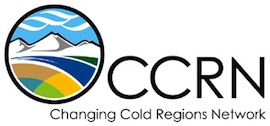
Dr. Barrie Bonsal
Environment and Climate Change Canada
Research areas
The main scientific contributions involved the assessment of synoptic-scale atmospheric circulation patterns as they relate to observed and projected future temporal and spatial trends and variability (including extremes) in hydro-climate over various regions of western Canada. This research contributes to Theme D: Analysis and Prediction of Regional and Large-Scale Variability and Change.
Trends in the Standardized Precipitation Evapotranspiration Index (SPEI) were firstly determined over regions within western Canada during the instrumental period of record (1900-2011). Results showed considerable multi-year variability over all regions (including during the summer (Jun-Jul-Aug) and water year (Oct to Sep) periods) with no discernible long-term trends. Future SPEI (2041-2070) was assessed using output from several RCM/GCM combinations used in the North American Regional Climate Change Assessment Program (NARCCAP). It was found that over the southern Prairies, there was an overall increased drought risk on an annual, summer, and winter basis with considerable inter-model variability ranging from a substantial increase in drought with a higher degree of inter-annual variability, to relatively no change from current conditions. Further north in the Athabasca River Basin, projections revealed an average change toward more drought-like summer and slightly wetter water year conditions, but there was also a substantial range among the climate models.
Subsequently, future (2041-2070) changes to key atmospheric circulation patterns that were found to be associated with extreme dry and wet conditions over the southern Canadian Prairies and the Athabasca River Basin were evaluated. It was found that the general features of observed circulations were apparent in the future (i.e., large-scale ridging and zonal flow patterns), with some changes to the average frequencies of the types. The most notable finding was an increase of summer ridging centred over the western Prairies for most scenarios that would translate into a higher future drought risk in the region.